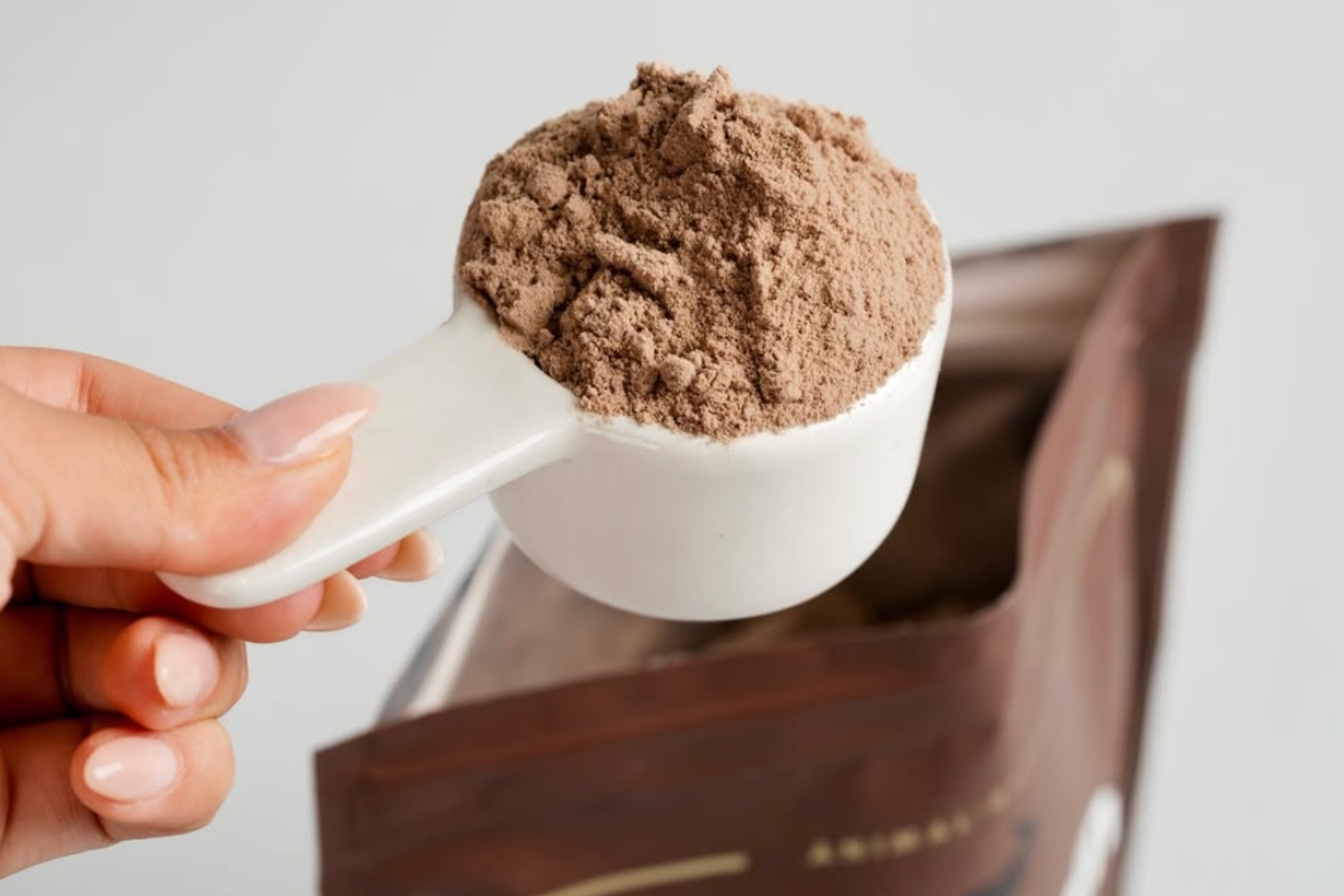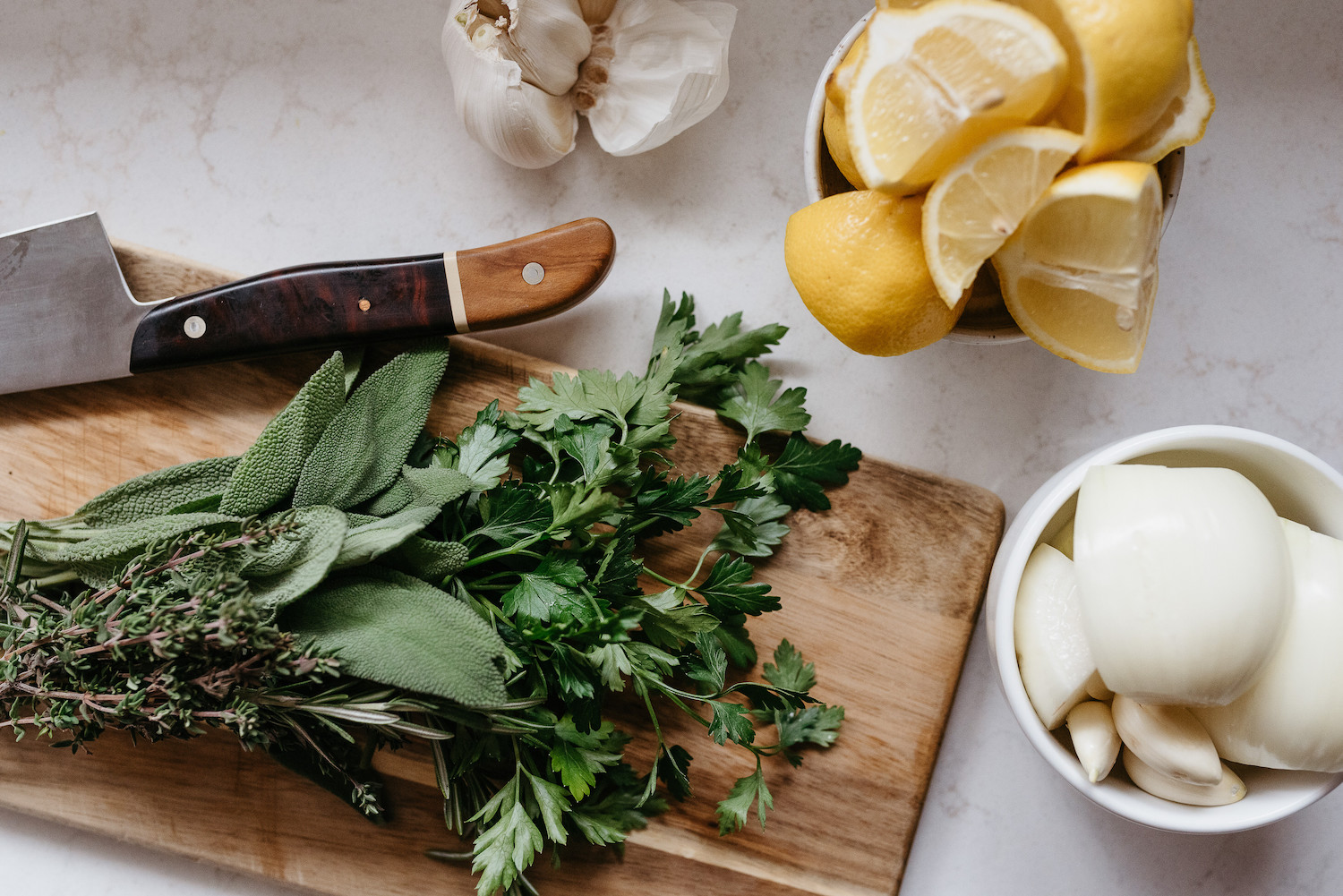
10 easy meals for when your hormones are causing havoc
We’ve all been there. It’s late in the day, you’re tired and hungry and the thought of planning a meal is just too much. Snacks and soda promise a quick energy kick, but long-term, you know they’re not a great strategy.
So what if there were quick and easy meals that would boost your energy and help balance your midlife hormones? Step forward 10 of the best hormone-balancing meals.
Each one is a great source of fiber, protein, and healthy fats. These are essential nutrients for regulating blood sugar, optimizing energy levels, mood balance, skin health, and more as we go through perimenopause. They’re free from artificial sweeteners, additives, colorings, and thickeners. And you can make most of them in large quantities and store or freeze the leftovers.
I purposefully haven’t listed them as breakfast, lunch, or main, because you can choose to eat them at any time of day. Eggy porridge for supper? Go for it! Beef patty for breakfast? Bring it on! I invite you to get playful and see what happens.
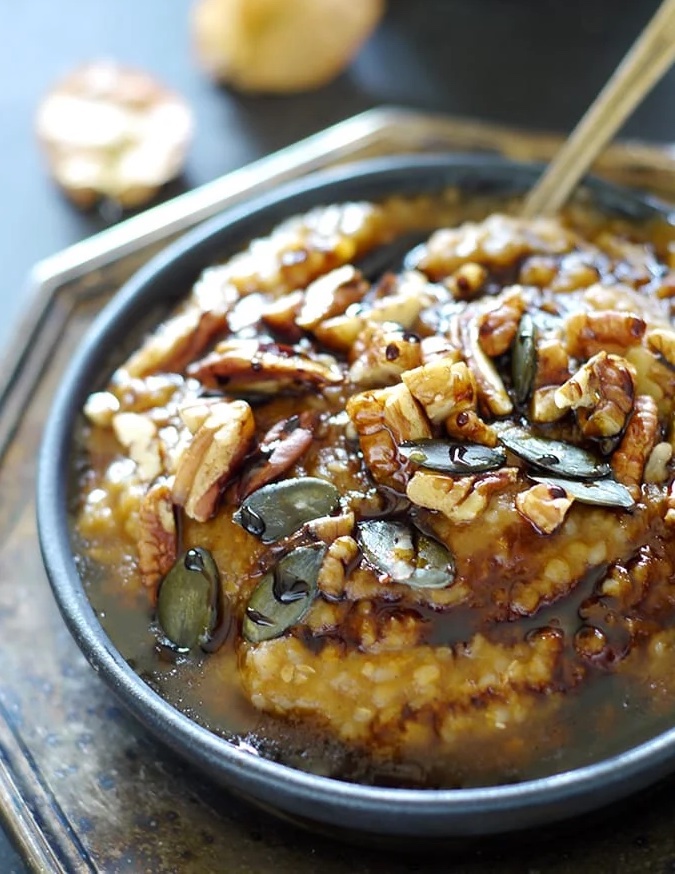
1. Eggy porridge
This one is quite divisive: you’ll either love or hate it. I love it, especially if I’m home late from work and feel too tired for a larger meal. The squidgy texture and gentle sweetness are like a hug in a bowl.
How to make
Gently heat 3 tablespoons of oats, 1 tablespoon of ground flaxseed, and roughly 100-150ml of milk (whichever type you prefer and use more if you like it runny). When the porridge is almost ready, crack an egg into the mixture and gently fold it through. It will cook in 1-2 minutes. Top with a handful of flaked almonds, pumpkin seeds, and a drizzle of maple syrup.
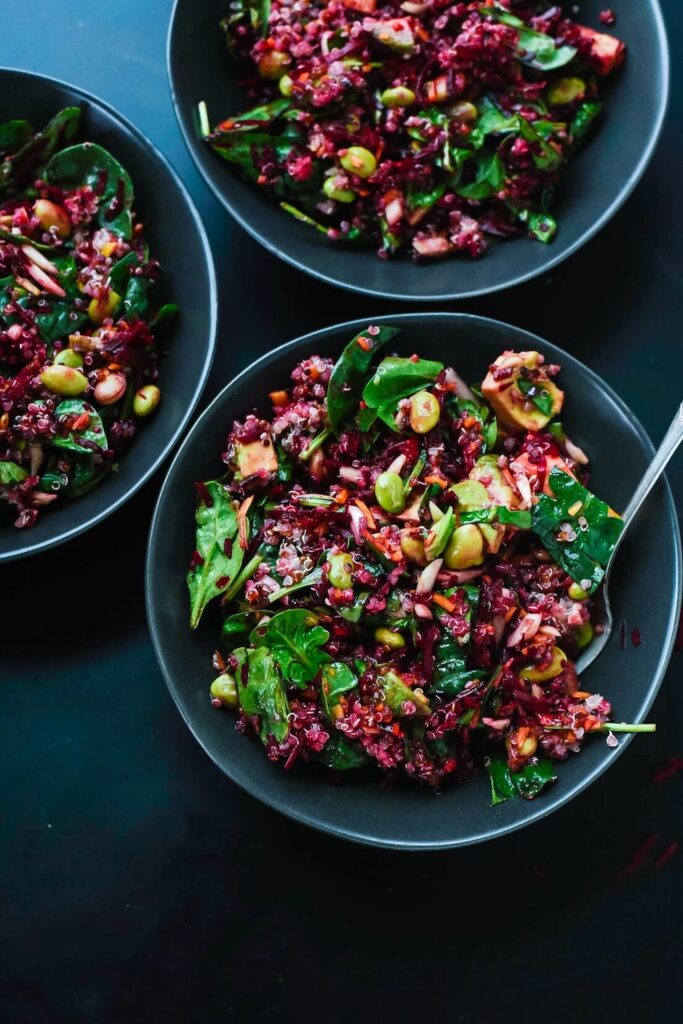
2. Beetroot, leafy greens, and quinoa salad
Beetroot and leafy greens like arugula, kale, and watercress support estrogen detoxification pathways in your liver. Quinoa provides fiber and a little plant protein, but you’ll want to top this up with extra protein from chicken, turkey, a couple of hard-boiled eggs, or tofu. I prefer to roast the beetroot, but you could enjoy it raw if you prefer. Dress the salad with homemade lemon dressing.
How to make homemade lemon dressing
Whisk together 3 tablespoons of olive oil, the juice of 1 lemon, and 2 tablespoons of apple cider vinegar with the mother (the active ferment that gives ACV its health properties). Add black pepper and ½ a teaspoon of honey to taste. Store in a screw-top jar in the fridge for up to 5 days.

3. Orange soup
No, it’s not a fruit soup — the name comes from the gorgeous color of this dish. Butternut squash, carrots, and tomatoes are rich in beta-carotene, a plant compound that converts to vitamin A in your body. Carotenes and vitamin A are antioxidants that protect cells against the rise in inflammation triggered by falling estrogen.
To save time, buy frozen ready-diced carrots, butternut squash, and onions.
You will need
- 500g (2 cups) carrots, peeled and diced
- 500g (2 cups) butternut squash, peeled and diced
- 1 onion or a handful of ready-chopped onion
- 100g (2/5 cup) dried red lentils
- 250ml (1 cup) passata
- 1 litre (1 quart) vegetable stock
- 1 teaspoon curry powder
- 1 tablespoon olive oil or coconut oil
Melt the oil in a large pan and gently soften the onions. Add the carrots, squash, and curry powder. Mix well and let them fry for a minute or so. Add the lentils, passata, and stock. Cook until the vegetables and lentils are soft. Allow to cool slightly, then blend until smooth.
Or pop all the ingredients in a soup maker and let it get to work!
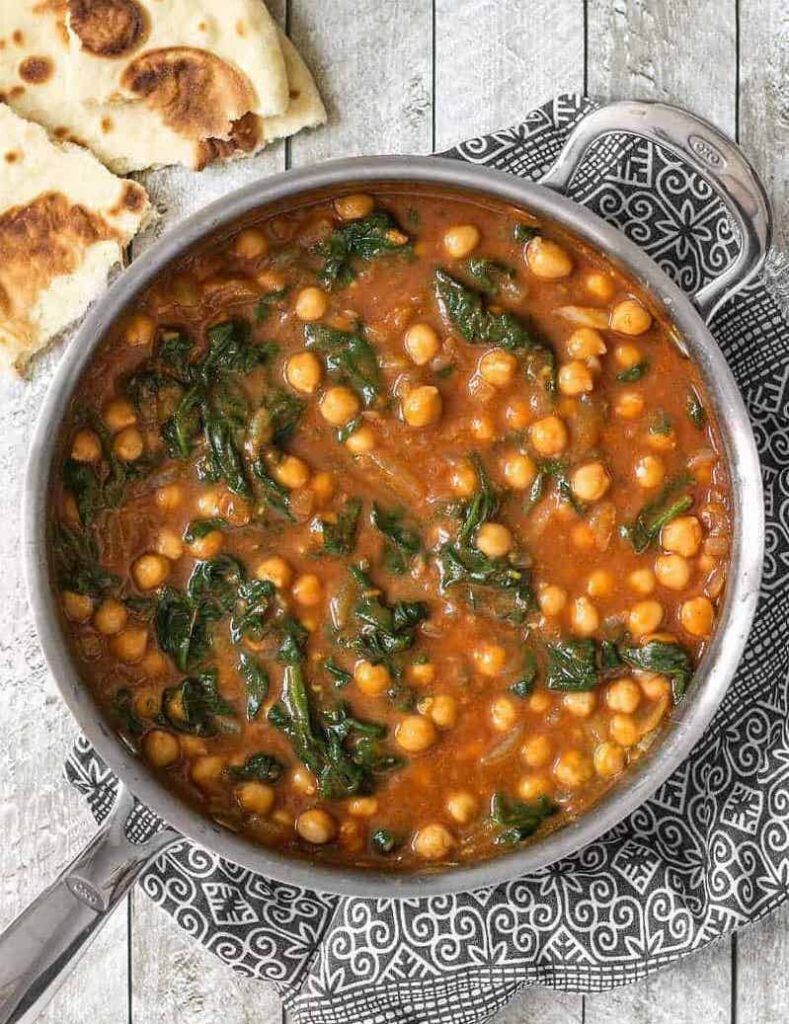
4. Garbanzo bean and spinach curry
Garbanzo beans contain phytoestrogens, plant compounds that help modulate the ups and downs of normal estrogen during perimenopause. They’re also packed with fiber and plant protein to boot.
This recipe serves two, so share with a friend or save the leftovers for tomorrow. Serve with rice or flatbreads.
You will need
- 1 diced onion or a handful of ready-chopped onion
- 1 teaspoon garlic puree
- Coconut oil or ghee for frying
- 1 tin/can garbanzo beans
- 60g (roughly 3 handfuls) baby spinach (use frozen if that’s easier)
- 1 teaspoon curry powder
- 1 tin/can of coconut milk
- 2 tablespoons tomato puree
- 1-2 tablespoons full-fat yogurt (or dairy-free alternative)
- 1 tablespoon chopped coriander (optional)
Gently fry the diced onion in coconut oil or ghee. Add the garlic and curry powder and mix well. Add the garbanzo beans, spinach, coconut milk, and tomato puree. Stir well and simmer until cooked. Serve drizzled with yogurt and coriander.
5. Scrambled egg with sweet potato toast
If you’re wheat- or gluten-sensitive, sweet potato toast is one of the best alternatives to regular bread. Just cut the potato thinly, lengthways, and pop a couple of slices in the toaster or under the grill until it’s crispy. That’s it!
Top with butter, scrambled eggs, and a handful of arugula, spinach, or watercress for a protein-packed energizing meal any time of day.
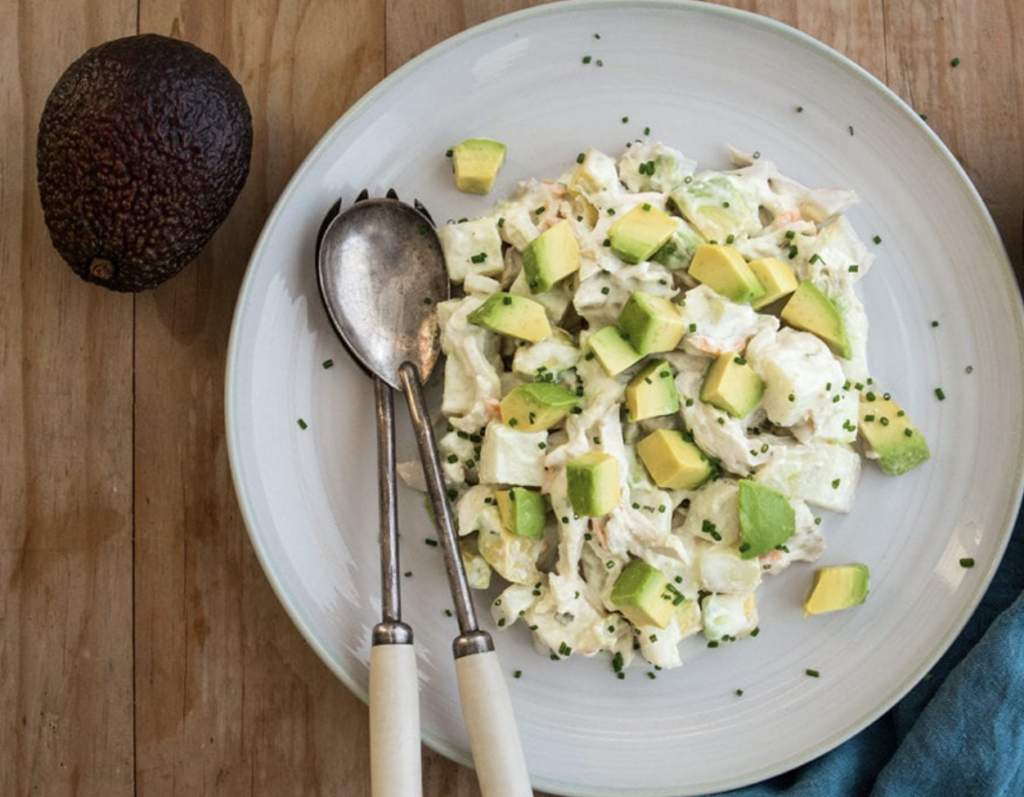
6. Chicken, avocado, and baby potato salad
This is a great way to use store-bought cooked chicken or leftovers from a roast. Avocado is rich in healthy monounsaturated fats, fiber, and vitamin B6 for hormone balance.
How to make
Boil the baby potatoes until cooked. Rinse with cold water and allow to cool slightly. Mash the avocado with a little lemon juice and mix it into the potatoes. Add shredded chicken, diced cucumber, a sprinkle of sea salt, and a drizzle of homemade lemon dressing.
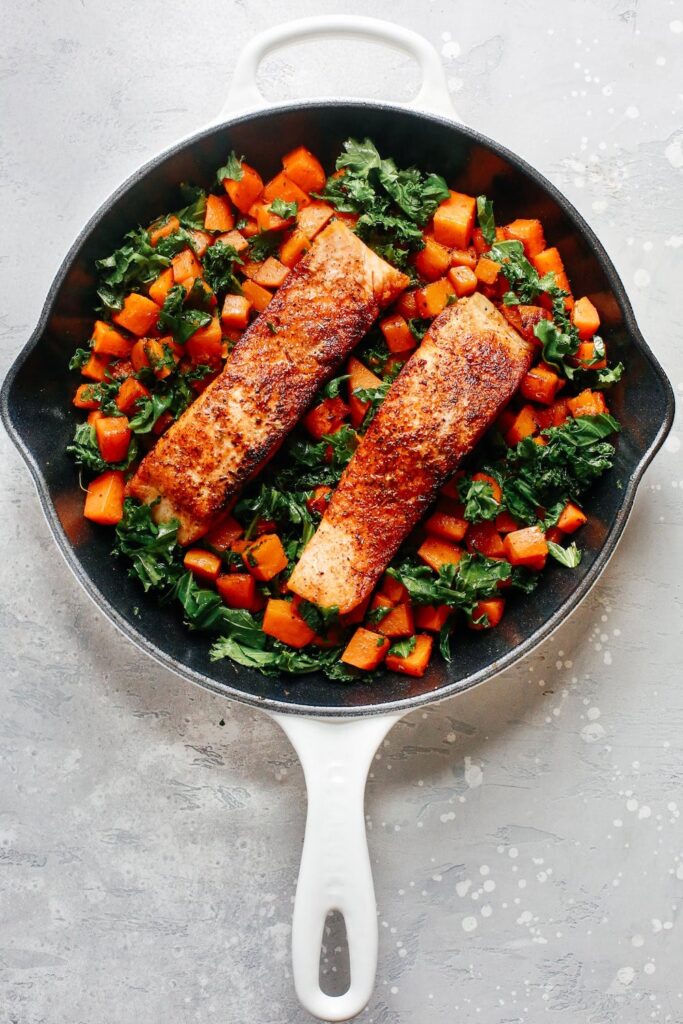
7. Sweet potato, salmon, and greens
Salmon and other oily fish such as mackerel, tuna, anchovy, and sardines provide anti-inflammatory omega-3 oils for heart, brain, and joint health. Not a fish lover? Swap the salmon for tofu or chicken, and drizzle the greens with flax or hemp oil for some plant-based omega-3.
Bake the sweet potato whole, or dice it and roast it in melted coconut oil. Meanwhile, top the salmon with a slice of lemon and a sprinkle of black pepper, wrap loosely in foil, and bake at 180 degrees C (350 degrees F) for 25 minutes. Serve with steamed greens (broccoli, kale, spinach) or watercress and arugula salad.
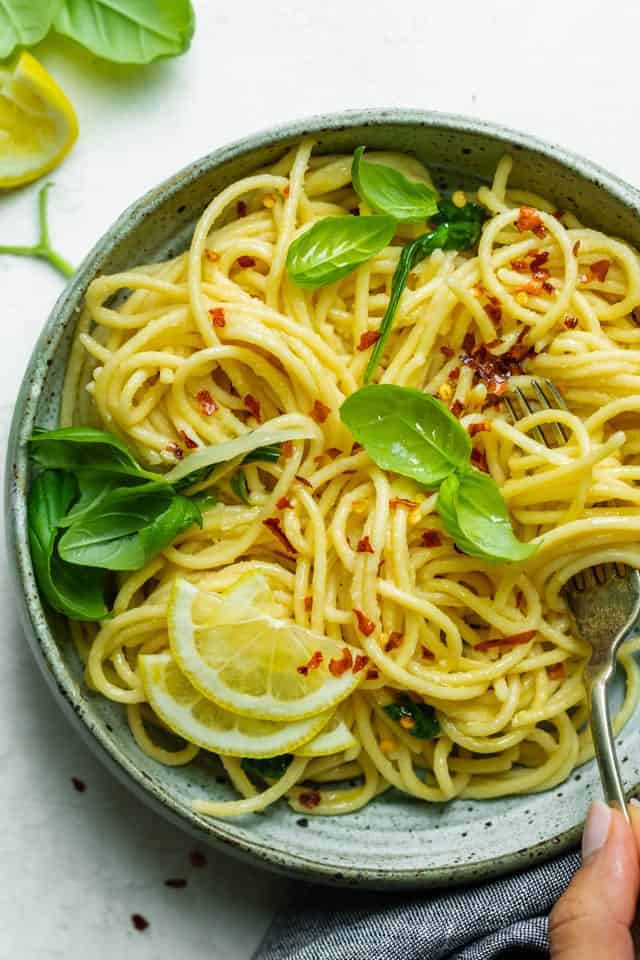
8. Houmous (hummus) pasta
Pasta is the perfect go-to when you’re short on time, but we need to rethink it during perimenopause, increasing blood sugar and hormone imbalance. Instead of white pasta, try lentil, pea, or wholewheat versions as they are less likely to cause blood sugar spikes.
Add houmous and colorful salad vegetables for more protein and fiber, and you have a hormone-balancing meal right there.
How to make
Cook your pasta until it’s “al dente” (cooked but still slightly firm). Add 2-3 tablespoons of houmous and a mixture of salad vegetables like cherry tomato, diced cucumber, sweet corn, and red onion. Sprinkle with mixed seeds and a splash of homemade lemon dressing.
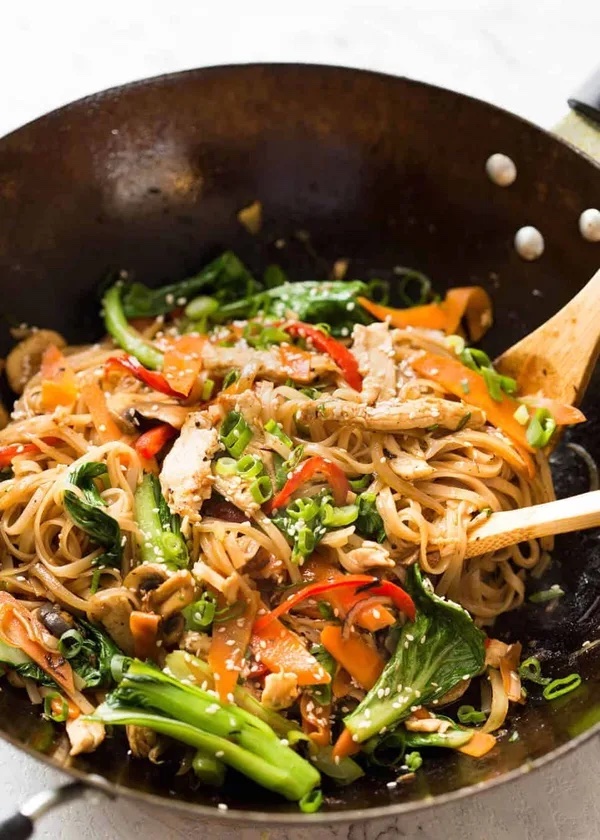
9. Stir-fry chicken with brown rice noodles
You can use raw, frozen, or leftover cooked chicken for this dish — whichever you have to hand. If using raw, be sure to add it at the start, whereas precooked can be added toward the end.
Alongside protein, chicken is a good source of vitamin B6, which works with magnesium for hormone balance and supporting mental well-being. The colorful vegetables in this stir-fry bring anti-inflammatory compounds, while brown rice noodles add fiber and energizing B vitamins.
How to make
Heat a tablespoon of coconut or sesame oil in a wok or large skillet pan. Add 1 teaspoon each of minced garlic and ginger, along with strips of raw chicken, and fry until cooked. Add 1-2 handfuls of strips of pepper, carrot, mushroom, and onion (use pre-prepared stir-fry vegetables to save time), a dash of soy sauce or tamari, and cook for 2-3 minutes, keeping the mixture moving around the pan.
Meanwhile, cook the brown rice noodles as per the instructions on the packet.
When everything is ready, serve the rice noodles in a bowl, top with the stir-fry mixture, and season with a squeeze of fresh lime.
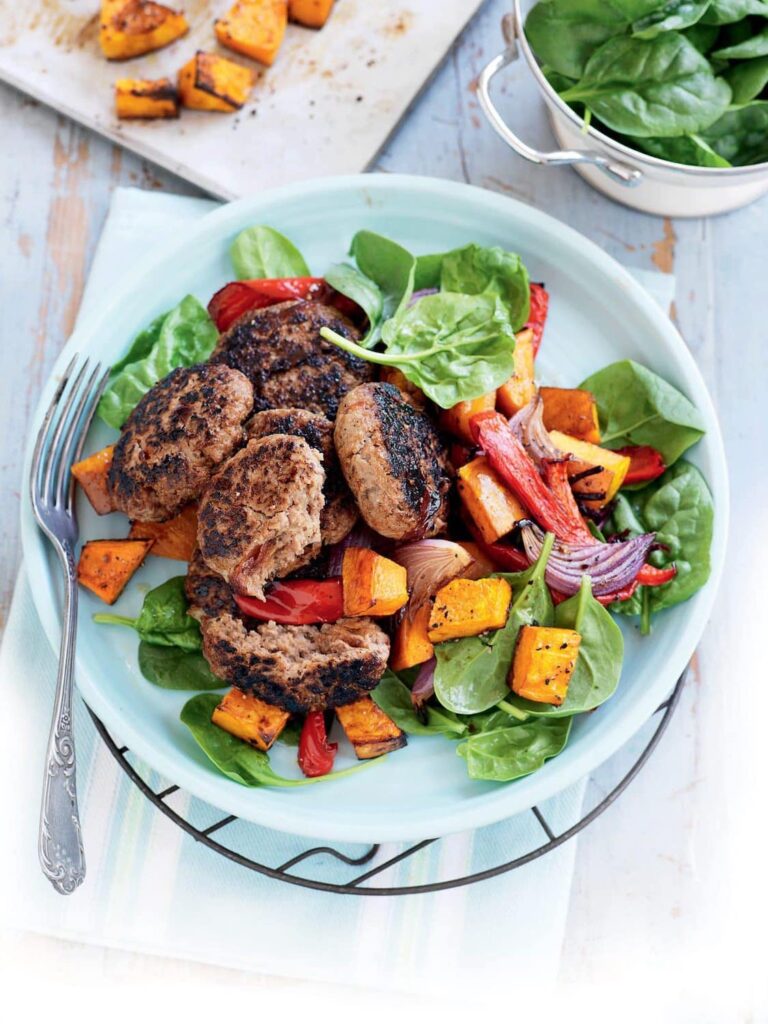
10. Ground beef patty with rainbow salad
Ground beef patties can be a helpful source of protein, iron, zinc, and vitamin B12 during perimenopause. If you’re making them yourself, go for the best pasture-raised beef you can find, or choose a high-quality, ready-made version. Serve with a rainbow salad of grated carrot, beetroot, tomato, cucumber, and sweetcorn, dressed with lemon dressing.
These meals provide true nourishment at a time when our bodies need it more than ever. Feel free to tweak the recipes and make them your own with herbs, spices, or your grandmother’s secret sauce. After all, this is your peri/meno journey, and you want to enjoy every bite.


